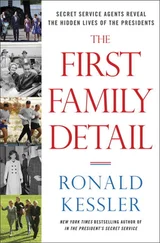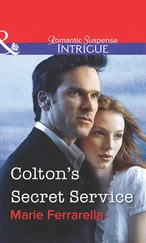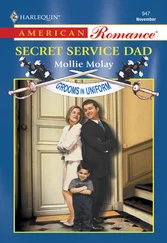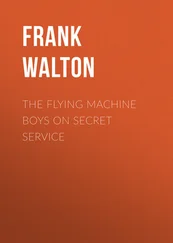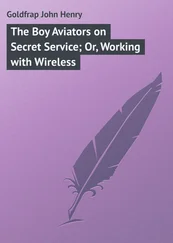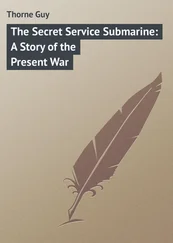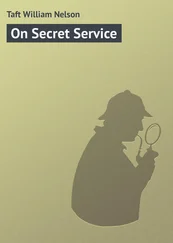Even a visit to a friend’s home requires elaborate preparation. When George W. Bush was president, he and Laura had dinner at the home of Anne and Clay Johnson, a close friend from high school. Guests included Bush’s Yale friend Roland W. Betts and FBI director Robert S. Mueller III, and his wife, Ann. Checking out the Spring Valley home in Washington beforehand, the Secret Service set up a command post in the basement.
“They asked that drapes be put up in the dining room and suggested a chair in which the president should be seated,” Anne Johnson recalls. “Agents were posted around the yard, and no-parking cones were put up in front of the house.”
The Secret Service asked the Johnsons to clear a closet that was big enough for at least two people.
“In case of an emergency, an agent was going to grab the president, and the two of them were going to dive in,” Anne Johnson says. “That would have been an interesting dive, because GWB would have had Laura by the hair, at the very least.”
Anne Johnson asked an agent, “What should everyone else do in case of an emergency?”
“I only have one client: the president,” the agent replied.
Ten days before a presidential trip, at least eight to twelve agents fly to the intended destination. That is in contrast to the two-man advance team sent for President Kennedy’s trip to Dallas. Back then, the Secret Service had about 300 special agents, compared with 3,404 today.
Now an advance team includes a lead agent, a transportation agent, airport agent, agents assigned to each event site, a hotel advance agent, one or two logistics agents, a technical security agent, and an intelligence agent. As part of advance preparations, a team of military communications personnel from the White House Communications Agency is sent to handle radios, phones, and faxes. They ship their equipment and additional personnel on Air Force C-130 cargo planes. The Uniformed Division’s countersniper team and the counterassault team from the Secret Service’s Special Operations division may also send agents on an advance.
The counterassault team, or CAT, as it is referred to, is critical to providing protection outside the White House. A heavily armed tactical unit, it is assigned to the president, vice president, foreign heads of state, or any other protectee, such as a presidential candidate, deemed to require extra coverage. In the event of an attack, CAT’s mission is to divert the attack away from a protectee, allowing the working shift of agents to shield and evacuate the individual. Once the “problem,” as Secret Service agents put it, is dealt with, CAT members regroup, and the shift leader directs them to their next position.
The Secret Service first started using the teams on a limited basis in 1979. They were formed after several agents involved in training were having lunch and began asking themselves how the Secret Service would deal with a terrorist attack, according to Taylor Rudd, one of the agents. After President Reagan was shot in 1981, the teams were expanded and eventually centralized at headquarters in 1983. CAT differs from a special weapons and tactics team (SWAT), which the police or Secret Service may deploy once an attack occurs. Code-named Hawkeye, CAT takes action as the attack occurs.
“Depending on the circumstances, before 1979, besides agents riding with the president, we had five or six agents in a muscle car with Uzi submachine guns,” says William Albracht, a founding member of the counterassault teams. “If something happened, they were supposed to lay down a base of fire or have firepower available. They added another layer of protection to the principal. If they came under attack, they would have returned fire. The job of the agents with the protectee is always to cover and evacuate. Get him the hell out of there. So they would try to cover a withdrawal, or if they’re in a kill zone, try in some way to get him out with extra firepower.”
The muscle car concept was “very loose, and the criteria for engaging hostile fire was somewhat unclear,” Albracht says. “The CAT program, which replaced it, was designed to codify and standardize the Secret Service’s response to terrorist-type attacks.”
Clad in black battle-dress uniform, known as BDU, CAT members travel with the president. They are trained in close-quarter battle—when small units engage the enemy with weapons at very close range. They are also trained in motorcade ambush tactics and building defense tactics.
Each CAT team member is equipped with a fully automatic SR-16 rifle, a SIG Sauer P229 pistol, flash bang grenades for diversionary tactics, and smoke grenades. CAT agents also may be armed with Remington breaching shotguns, a weapon that has been modified with a short barrel. The shotgun may be loaded with nonlethal Hatton rounds to blow the lock off a door.
One time a CAT team had to deploy was January 12, 1992, when a protest rally got out of hand during a visit by President George H. W. Bush to Panama City, Panama. Agents rushed Bush and his wife back into their limousine, and they sped away unharmed. No shots were fired by the Secret Service.
In August 1995, CAT deployed again when President Clinton was playing golf at the Jackson Hole Golf & Tennis Club in Wyoming. Secret Service agents spotted a worker aiming a rifle at Clinton from the rooftop of a home under construction on the edge of the golf course. It turned out that the man was using the rifle’s telescopic site to watch the presidential party up close. Agents held him for questioning and then released him.
In contrast to the CAT team, the countersniper team, also dressed in BDUs, does not travel in the motorcade. Instead, the counter-snipers—code-named Hercules and long used by the Secret Service—take positions at key exit and entrance points. For instance, when the president is leaving or entering the White House, they position themselves on the roof and on balconies across the street.
Thus, the countersnipers are observers and can respond to a distant threat with their .300 Winchester Magnum—known as Win Mag—rifles. The rifle is customized for the shooter who is assigned the weapon. Each team is also equipped with one Stoner SR-25 rifle. Counter-snipers are required to qualify shooting out to a thousand yards each month. If they don’t qualify, they don’t travel or work.
The countersnipers work hand in hand with the counterassault team. If CAT is in a building and wants to leave for the motorcade, the CAT team leader calls out to the countersniper unit to ask if the area is clear.
In contrast to the cursory look given to Kennedy’s planned Dallas parade route, the Secret Service’s Forensic Services Division now creates virtual three-dimensional models of buildings along a motorcade route so that agents will know what to expect and can plan what to do at spots where the motorcade may be more vulnerable to attack. The division also produces slide shows of the floor plans of buildings where the president will speak.
As part of advance work, the Secret Service designates safe houses, such as fire stations, to be used in case of a threat. It also plots the best routes to local hospitals and alerts them to an impending presidential visit.
If the president plans to stay in a hotel, the Secret Service takes over the entire floor where his room will be, as well as the floors above and below. Agents examine carpeting to check for concealed objects. They check picture frames that might be hollow and conceal explosives. They plan escape routes from every room that the president will enter.
“In the hotel, if the president will stay overnight, we secure the suite and floor he will stay on and make it as safe as the White House,” an agent says. “We seal it off. No other guests can be on the floor. If the floor is huge, we will separate it. But no outside people will be on the floor, guaranteed.”
Читать дальше

